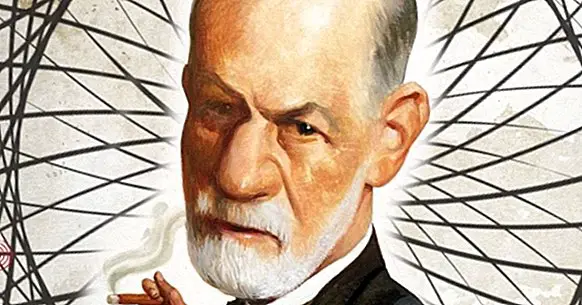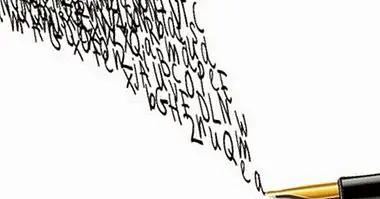The Psychoanalytic Therapy developed by Sigmund Freud
On several occasions we have talked about Sigmund Freud and his vital importance in the development of psychoanalysis.
But in addition to the different theoretical constructs, Freud also promoted the Psychoanalytic Therapy , a type of psychological treatment that draws on the influence and practical knowledge of the famed Austrian psychoanalyst.
Freud and the importance of the unconscious
The Psychoanalytic Therapy developed by Sigmund Freud Underlines the influence of our unconscious mind on our thoughts, attitudes and behaviors . In short, psychoanalysis places emphasis on the importance of unconscious content in our mental health, being this the cause of many psychological conditions and disorders.
Psychoanalytic Therapy investigates the unconscious mind and explores the different experiences that patients had during their childhood, in order to discover if these events may have had an impact on the subject's life development, or to recognize these events as the genesis of some disorder or mental problem today. This type of therapy is usually considered in the long term, and seeks a deep and lasting restructuring of the patient's psyche . Unlike other therapeutic approaches (such as brief therapy), Psychoanalytic Therapy seeks to create relevant changes in the personality and emotions of the patient, improving their self-knowledge and their quality of life.
Basic Principles of Psychoanalytic Therapy
To know what this type of psychotherapy consists of, It is relevant that we review some of the principles and foundations of applied psychoanalysis . It is true that each psychoanalyst will address the needs of their patients in a unique and personalized way, but most of these therapists follow these elementary principles:
- Psychological conflicts are the consequence of problems in the unconscious
- Symptoms are externalized due to latent conditions
- The origin of these unconscious conflicts are often found in unresolved problems during childhood, or in traumas that have been repressed
- The therapy makes these repressed thoughts conscious, and it is at that moment when the patient can treat and overcome their fears and affections.
Bases of intervention of Psychoanalytic Therapy
Psychoanalytic Therapy inquires about the impulses and impulses that every human being keeps in his unconscious, and aims to provide a situation of rediscovery of oneself in order to promote an improvement of the current psychic state. In this process, the patient must better understand his past and the different life events that have affected his life , being able to recompose their beliefs and memories to overcome the conflicts that it brings.
The therapy extends over several sessions, which can vary depending on multiple factors and circumstances. In any case, the atmosphere of trust between patient and therapist (the "rapport") should allow the latter to talk openly about their latent thoughts, memories and emotions.
The psychoanalyst therapist will only listen to the patient's stories and concerns, being attentive to patterns of thoughts or memories that may be of clinical interest. Throughout the therapeutic sessions, the repressed feelings will flourish and the patient will make his anxiety and fears dissipate .

Various therapeutic techniques
We have talked about the importance of the psychoanalyst paying attention to the patient's reflections and thoughts aloud. But the professional can also use a series of techniques and strategies to promote the patient's expression and to be able to detect the possible causes of their fears and concerns.
Among these techniques, we can find the following.
1. Free association
The free association is a therapeutic technique that cOnsiste in that the patient expresses everything that goes through his mind, trying not to censor or cut off the torrent of memories , thoughts and ideas that you have at that moment. The role of the psychotherapist will be to promote this "fluid speech", with the aim of returning the patient to psychological and emotional states, from which it will be easier to detect the patterns of conflict that the subject may be feeling.
2. Transfer
The therapeutic transfer is the process by which emotions, beliefs or feelings linked to important people in the patient's life (such as their parents, partners or siblings) are transferred to the therapist . Although this process of transfer does not occur in all therapies, in cases in which the psychoanalyst does occur, he or she must make the patient aware of the existence of the phenomenon, providing it with meaning and understanding and improving the way in which the patient relates to their loved ones. .
3. Interpretation
One of the fundamental skills in the psychoanalyst is know how to interpret and draw correct conclusions through the thoughts and stories of the patient . At appropriate times, the therapist will ask and question some of the patient's thoughts, reflectively discussing them. Psychoanalysis also interprets dreams, and the content of these can also be analyzed because of their relevance in the unconscious world.
What is the use of Psychoanalytic Therapy?
Psychoanalytic Therapy It can be very useful for people who feel a recurrent emotional concern, and also for individuals who want to know themselves a bit better themselves .
The feeling that we are able to better understand our beliefs, thoughts, emotions and feelings often results in a better self-concept and well-being. However, Psychoanalytic Therapy is less recommended for cases in which a quick solution to a conflict or psychological difficulty is sought. Psychoanalysis, and especially the therapy that Sigmund Freud developed, is focused on knowing, gradually and deeply, the unconscious and the manifestations of it in our daily behavior.
Limitations and criticisms
Circles of psychologists and psychotherapists often point out that the psychoanalytic approach can be more effective in cases of unspecific problems , such as low self-esteem, shyness, insomnia and other sleep disorders, sexual problems and anxiety.
However, psychoanalysis and Psychoanalytic Therapy continue to be controversial due to their scarce empirical support. Thus, professionals with a cognitive-behavioral orientation agree that the psychoanalytic approach is less effective than CBT, which has demonstrated a high degree of success scientifically in cases of specific disorders, such as obsessive-compulsive disorder, stress and disorders. of personality.



















